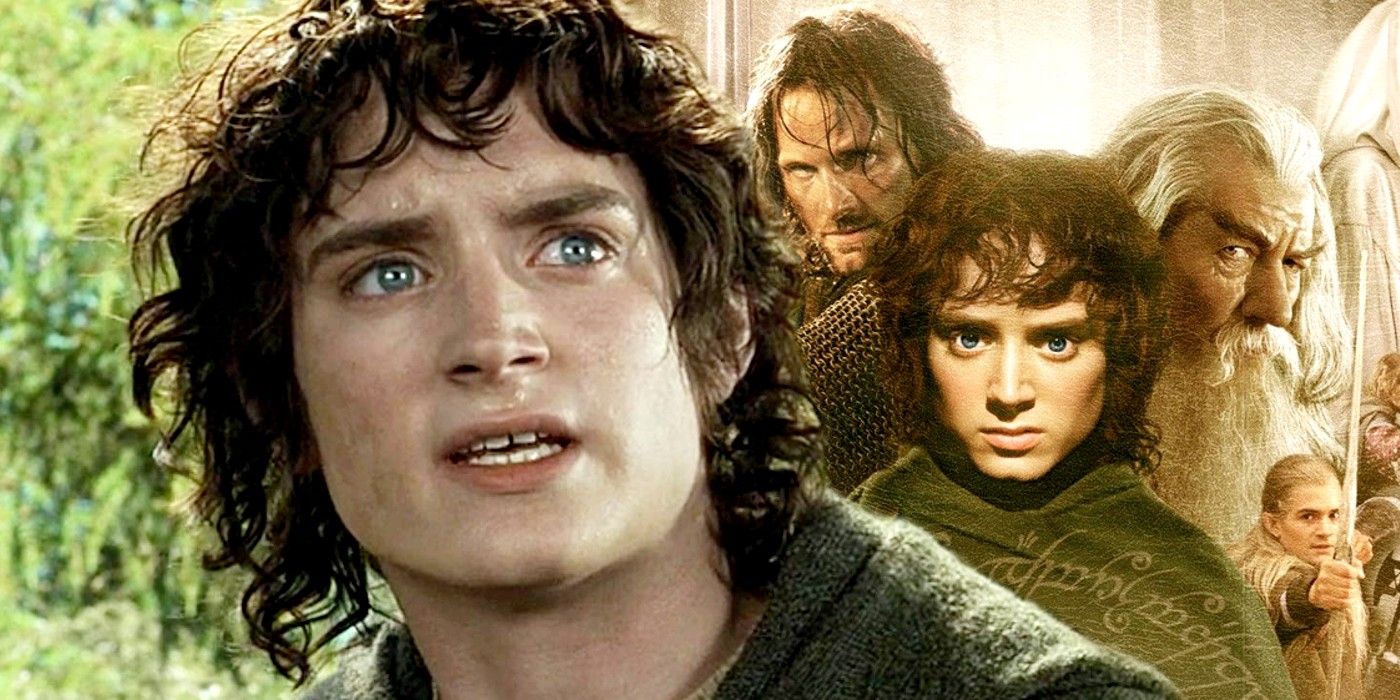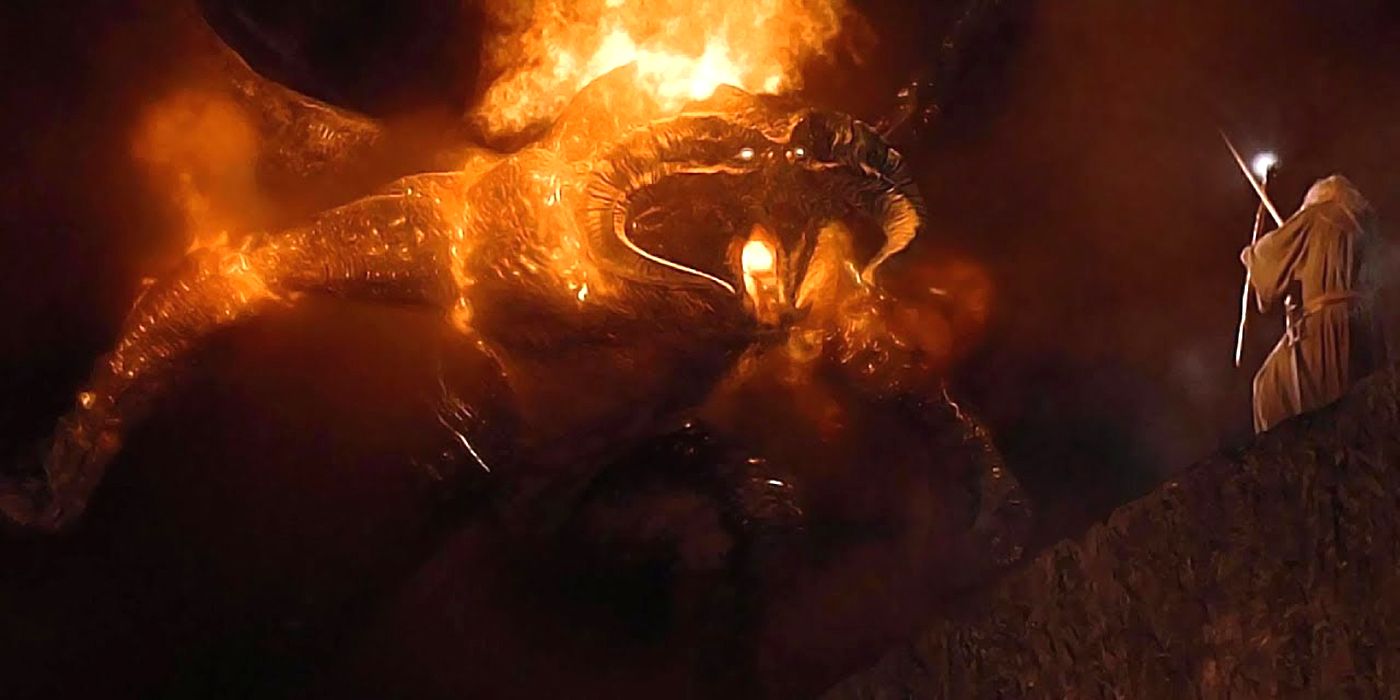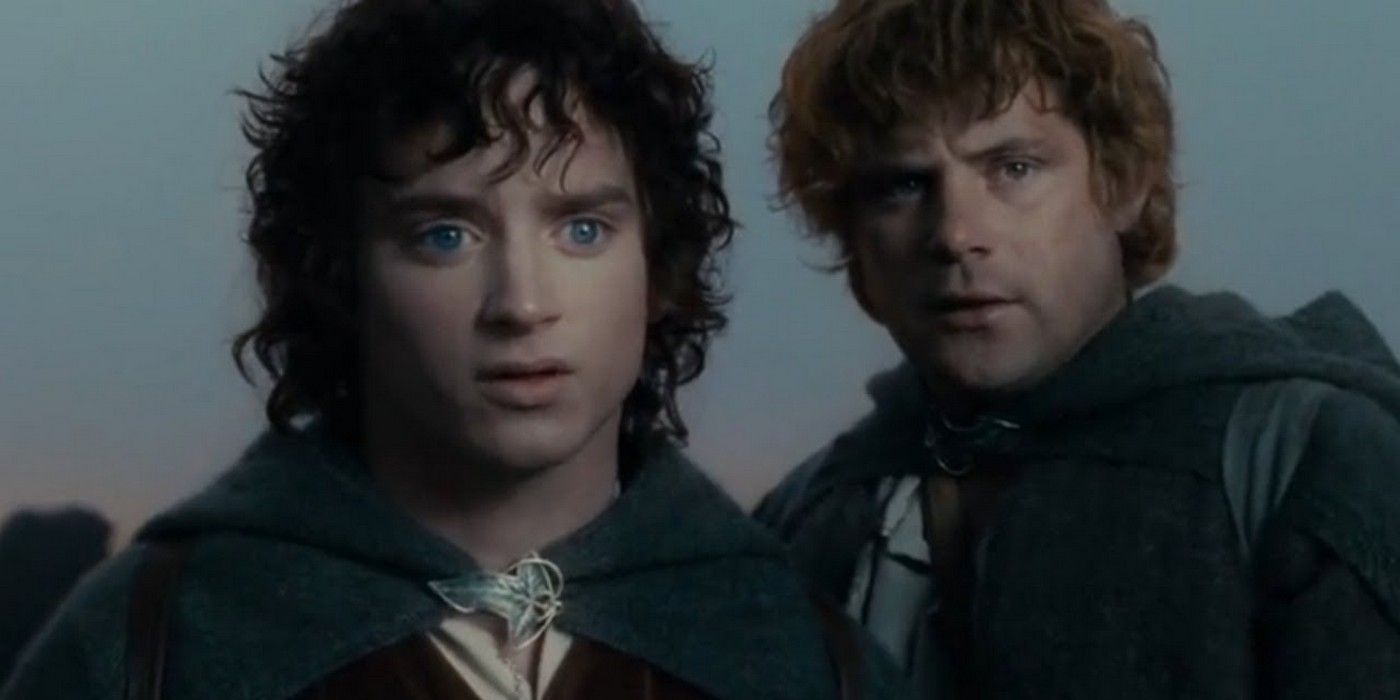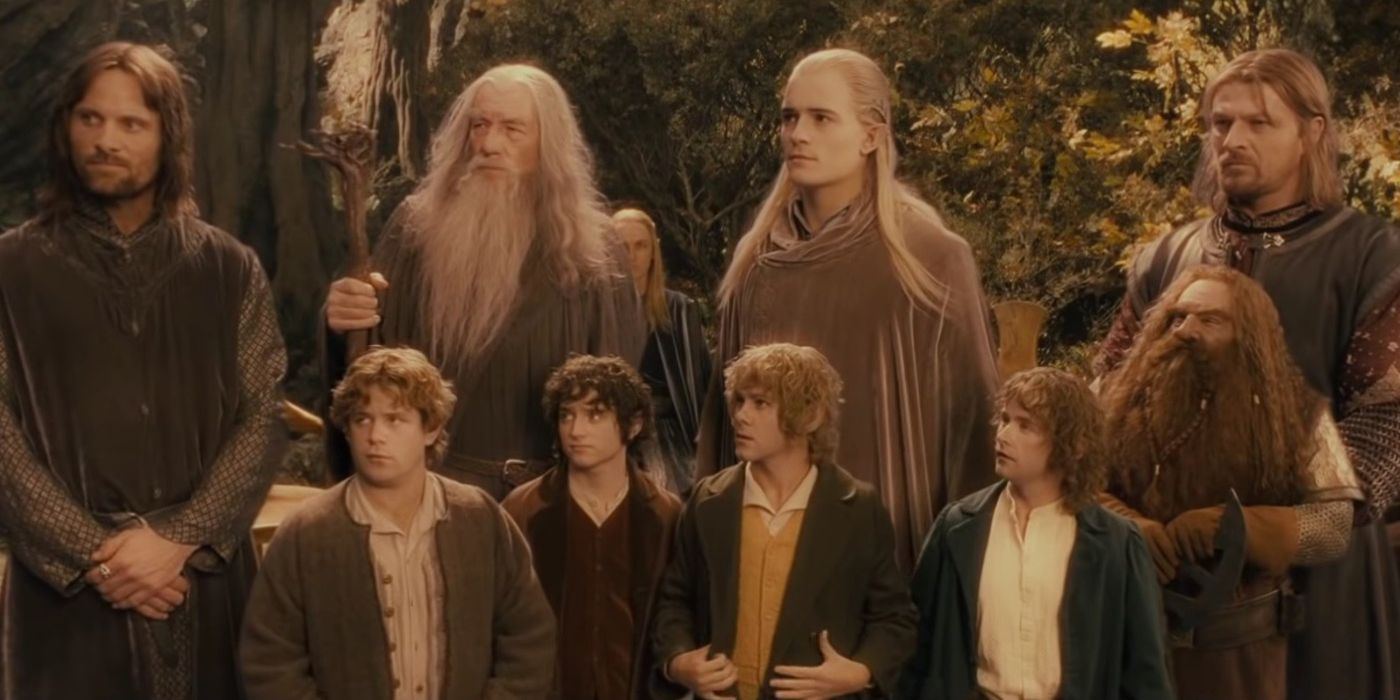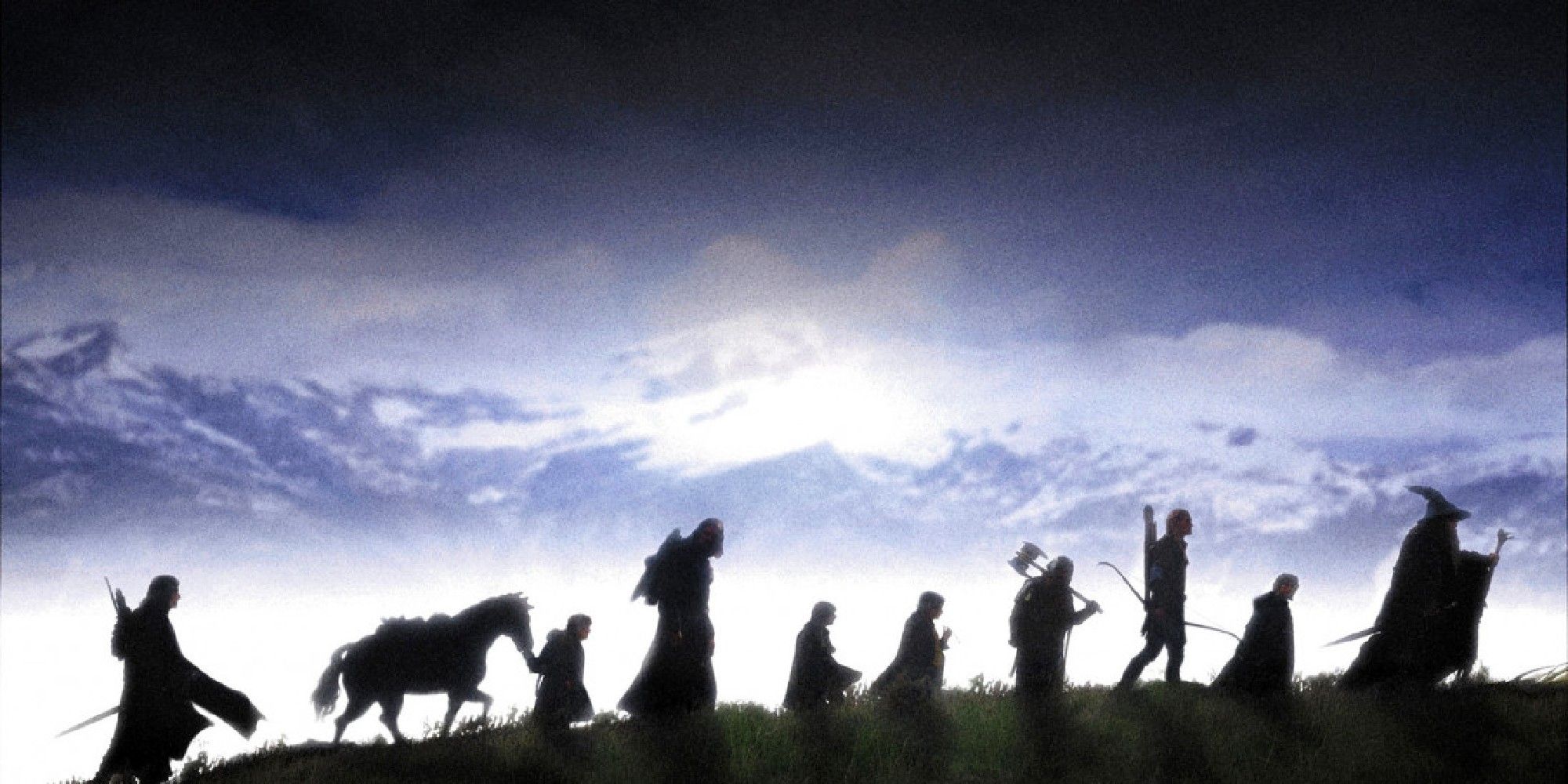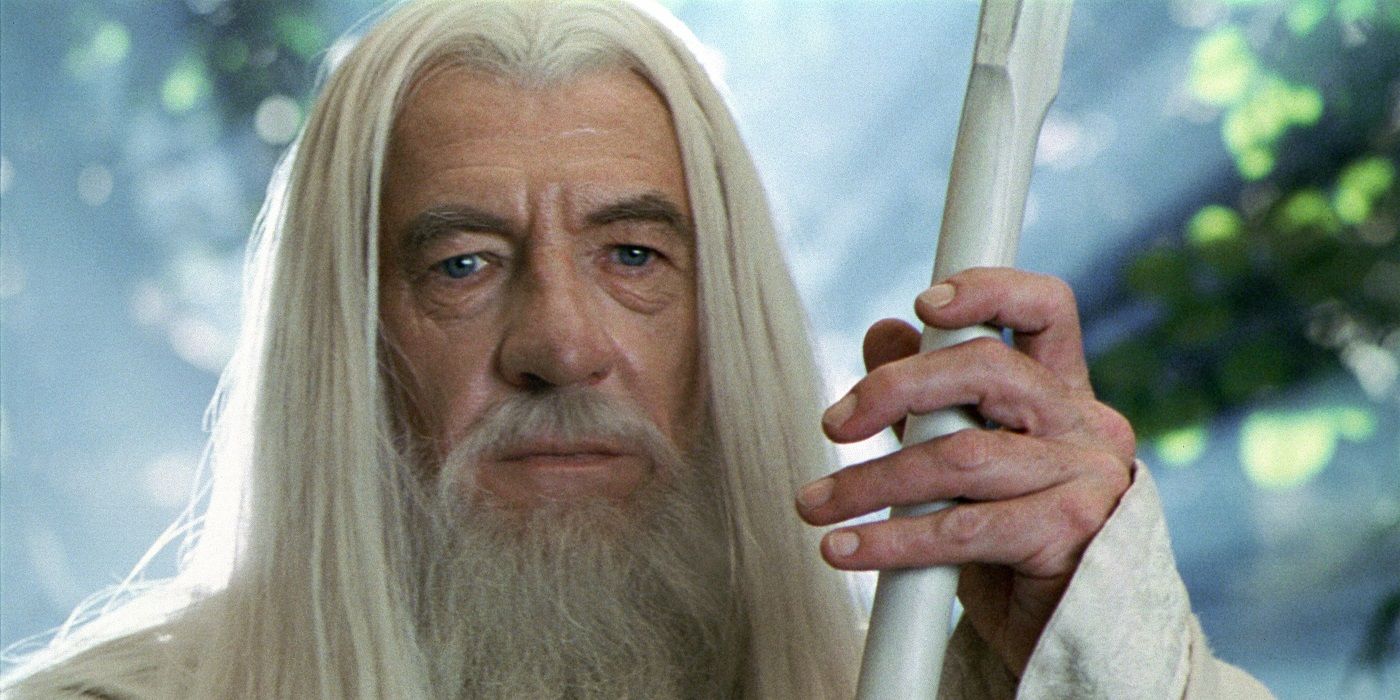The Fellowship of the Ring might be a controversial choice for best Lord of the Rings movie - but here's why that honor is thoroughly earned. When Peter Jackson embarked upon his twice-in-a-lifetime quest to adapt J.R.R. Tolkien's timeless Middle-earth novels into a movie trilogy, he knew one of cinema's biggest ever undertakings lie ahead. Fortunately, the multi-year shoots and groundbreaking special effects innovation were well worth the effort. Jackson's Lord of the Rings was hailed by fans and critics (albeit not necessarily the Tolkien faithful), earned a box office haul to rival Smaug's Dwarven stash, and even picked up an Oscar or 17.
None of that success would've been possible without a winning opening chapter, and The Fellowship of the Ring provides an awe inspiring introduction to live-action Lord of the Rings. Beginning with Frodo Baggins in the Shire and charting the Fellowship's founding, Gandalf's death, and the Fellowship's breaking, The Fellowship of the Ring is responsible for announcing Jackson's interpretation of Tolkien onto the global cinematic stage, laying the foundations for everything else to come.
Most broadly consider The Hobbit to be Jackson's inferior trilogy, but opinion is split over which The Lord of the Rings movie is the one to rule them all. In November 2021, an Empire survey of writers and readers crowned Fellowship of the Ring as the franchise's peak, and while maybe not the obvious pick, Lord of the Rings' movie debut richly deserves its place upon the brilliant white summit of Minas Tirith.
Fellowship Of The Ring Has LOTR's Best World-Building
Every Lord of the Rings movie does one key trilogy component better than its companions. The Two Towers' Battle of Helm's Deep is arguably the greatest fantasy battle sequence ever put to film, while Return of the King successfully balances epic clashes between good and evil with Frodo and Sam's more intimate quest to destroy the One Ring. Fellowship of the Ring's strength, however, lies in its world building.
Peter Jackson spends an entire act showcasing The Shire and exploring Hobbit culture in great detail. Whereas Hollywood book adaptations typically race through initial exposition, Bilbo's birthday in Fellowship of the Ring takes its sweet time establishing the Hobbits as a race and The Shire as an insular English-inspired village, while humbly indulging the Hobbits' many quirks and curiosities (second breakfast, for example). The simplicity of Frodo's people contrasts wonderfully with the glory and splendor of the Elves, who Fellowship of the Ring induct with appropriately mythical fanfare. The magical, ancient surroundings of Rivendell and the similarly regal Elves within take The Fellowship of the Ring to the opposite end of the species spectrum compared to Hobbits. Both are proud races, but while Elves take pride in being accepted by Valinor, Hobbits have more ways to cook potatoes.
Between the two extremes of The Shire and Rivendell, the character of Gimli brings Dwarves into The Lord of the Rings, and their culture is elaborated upon by a memorable visit to the Mines of Moria. The dark smoky skies of Mordor then firmly place Sauron as The Lord of the Rings' villain, leaving no doubt as to the story's stakes. It's astounding that Fellowship of the Ring manages to provide insight into so many contrasting corners of Tolkien's Middle-earth, yet somehow do justice to each. The Two Towers and The Return of the King later delve into Tolkien's geographical melting pot further, but it's Fellowship of the Ring that best captures the author's wondrous sense of exploration, setting the tone perfectly for the adventures to come.
Fellowship Of The Ring's Biggest Problem Is The Ending
Regardless of Peter Jackson's efforts, The Fellowship of the Ring's foremost flaw was impossible to avoid. After almost 3 delightful hours trekking across Middle-earth, The Fellowship of the Ring just sort of... stops. The Fellowship has been broken by Boromir's betrayal and subsequent demise, Frodo is barely any closer to Mount Doom than when he started, and nothing of import has been resolved, leaving infinitely more questions than answers. For those unfamiliar with the source material (which, let's face it, was most people in 2001), it's a jarring conclusion, atypical to the usual blockbuster sequel setup where only one or two loose ends are left dangling for a follow-up.
The Fellowship of the Ring's orc in the ointment is the incomplete feeling audiences were left with walking out of theaters, back in the days when 9-hour Lord of the Rings movie marathons were the stuff of dreams. But isn't it too harsh to call The Fellowship of the Ring's ending unfinished when that's part and parcel of the source material? Peter Jackson's Middle-earth opener takes its finale cues directly from Tolkien, who in turn designed The Lord of the Rings as one massive story (actually divided into 6 parts, rather than 3). One can reasonably accuse The Two Towers of emphasizing spectacle over plot, and Return of the King for its buttock-numbing length, but The Fellowship of the Ring's only major downside is quite by design.
Fellowship Of The Ring's Character Moments Make The Sequels Shine Brighter
All 3 entries in the Lord of the Rings trilogy deliver in terms of character. Whether it's Aragorn's rousing pre-battle speech, Merry and Pippin's antics in Gondor, or Legolas' heartwarming bond with Gimli, The Two Towers and Return of the King are both packed with personal development. Nevertheless, it would be remiss to not mention how Fellowship of the Ring does the heavy lifting.
Even with 3 hours to play with, establishing 9 protagonists (plus villains and supporting faces) is a screenwriter's nightmare, but Fellowship of the Ring deftly negotiates that narrative maze to excavate the core traits of every character. Boromir's corruption and redemption feels entirely earned, the friendship between Frodo and Sam becomes the trilogy's beating heart, and Aragorn's path to glory is set out right from the off. It's only because The Fellowship of the Ring gives such earnest introductions to each main figure that the cast don't become lost in a hail of blood and arrows during later installments, with The Two Towers and The Return of the King inheriting a Fellowship that's not only fully-formed, but that already won the audience over long before. For many, the best part of Lord of the Rings is the charming, wonderfully-realized characters populating Middle-earth, and no film entry gives them a spotlight quite like Fellowship of the Ring.
Fellowship Of The Ring Stays Most Faithful To Tolkien
J.R.R. Tolkien loyalists have something of an iffy relationship with Peter Jackson's movies. While many can appreciate the books and films as separate works each with their own merits, others echo the sentiments of Christopher Tolkien (J.R.R.'s son) who believed Jackson diluted The Lord of the Rings into reductive, action-centric blockbusters for children. Whatever side one takes, however, there's little room to deny Fellowship of the Ring best represents Tolkien's spirit and tone.
Though big chunks of the novel are missing (Tom Bombadil, Fatty Bolger, etc.) the first leg of Frodo's journey is the most innocent, capturing the protagonists before they become Ring-weary and, more importantly, before Jackson's Lord of the Rings kicks off the epic procession of battles that dominate The Two Towers and The Return of the King. When Frodo, Sam, Merry and Pippin first step foot out of The Shire, they meet Aragorn at the Prancing Pony, look woefully out of their depth at the Rivendell council, and tragically watch Gandalf fall to the Balrog. That steady progression from leisurely stroll to "No, seriously, people are dying here" is completely recognizable as Tolkien's text coming to life. Whereas the larger scale of subsequent movies perhaps took The Lord of the Rings away from its origins, The Fellowship of the Ring has Tolkien's unique hallmarks and fantasy strangeness all over it... perhaps more than some will admit.
Why It Doesn't Matter Which Lord Of The Rings Movie Is Best
More important than choosing which Lord of the Rings movie reigns supreme is recognizing that no one actually agrees. Movie sequels are infamously tricky to get right - adaptation or no - and the amount of Hollywood trilogies where quality remains consistent throughout can be counted on one hand (Back To The Future, Toy Story, John Wick...). That the discussion surrounding Peter Jackson's best Middle-earth movie inspires such diverse opinion - and that there's no clear-cut "right" answer - both serve as testament to how good the Lord of the Rings trilogy truly is.
Like Tolkien's books, the Lord of the Rings movies are designed as a larger whole; to be considered an overarching tome, rather than a trio of smaller, interconnected tales. This makes nailing down the best installment even harder - like trying to decide whether the beginning of a meal was better than the middle and end. Precious few franchises can claim to inspire the same universal appreciation, which means the most important conversation isn't whether The Fellowship of the Ring is the best Lord of the Rings movie - it's how all 3 films are genuine contenders to that title.

